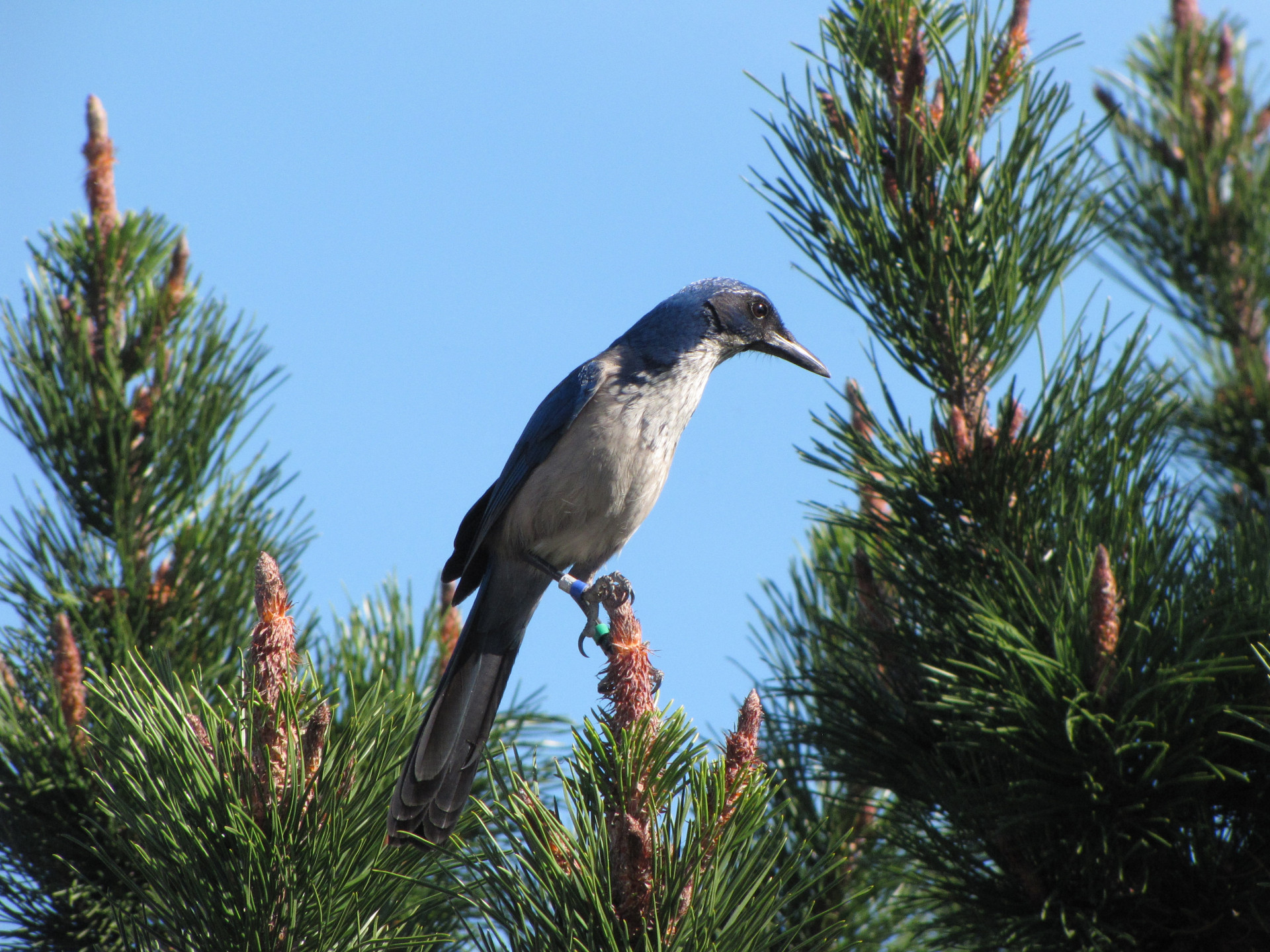
Scientists long assumed that new biological diversity could only be generated if populations became isolated on opposite sides of mountain ranges, canyons, rivers, or other physical barriers.
Without these barriers, it was believed that evolution would be unable to generate differences between populations—even in the presence of multiple, unique environments—because animals would freely interbreed with one another.
A new study led by Colorado State University researchers challenges the long-held notion that physical barriers are necessary to spur biodiversity. The study, which was a collaboration between CSU, the Smithsonian Institution and The Nature Conservancy, examined an isolated population of island scrub-jays on Santa Cruz Island off the coast of California and found the birds had different beaks depending on the type of habitat they lived in.
Scrub-jays that lived in all three of the island’s stands of pine habitat had longer, shallower beaks—better suited for opening pine cones—while their next door neighbors in oak habitat had shorter, stouter beaks with which they could open acorns from oak trees.
The findings were published this week in Evolution.
“We found tiny ‘islands’ of evolution within an actual island,” said Katie Langin, a former Ph.D. student in the Department of Biology and the Graduate Degree Program in Ecology who led the study. “It was very surprising to find such differences on such a small scale. The island is only 22 miles long and these birds live right next to each other.”
Data led to discovery
Langin discovered the difference while catching the birds for an entirely different project—one that required measuring the characteristics of scrub-jays across Santa Cruz Island and comparing them to old scrub-jay specimens housed in museums.
She went into the study assuming, like everyone else, that scrub-jays on one part of the island would be similar to scrub-jays on another part of the island. But she was wrong.
Langin captured hundreds of birds, measured their beaks and logged the data. When she returned to Colorado, she noticed a significant difference between birds that lived in oak and pine habitats.
She took it to her advisor Cameron Ghalambor and committee member Chris Funk, both professors of biology at CSU.
“The conventional dogma has always been that there needed to be some sort of barrier to prevent gene flow,” Funk said. “But these populations were able to diverge despite that.”
Re-evaluate conventional wisdom
Funk believes that Langin’s findings will prompt scientists to re-evaluate this conventional wisdom and examine whether the same phenomena occurs elsewhere.
“People have always assumed you wouldn’t find those genetic differences at such small scales so they haven’t really looked for it,” he said.
Langin, who changed the topic of her dissertation shortly after discovering the different beak traits, agrees.
“What this shows is that evolution can generate biological diversity at incredibly small scales – possibly even within the confines of your own backyard,” Langin said. “There may be a lot more biodiversity out there in nature than meets the eye.”